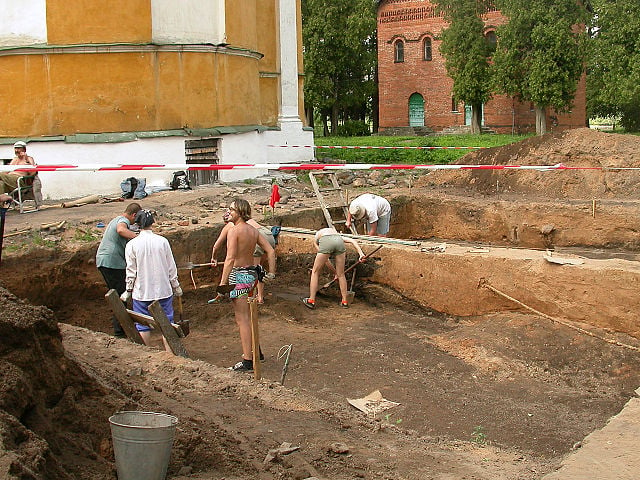
A team of scientists has recently discovered an ancient necropolis in the heart of Paris, just a few meters away from a busy train station. The site has provided an exceptional opportunity to gain insight into life in Lutetia, the predecessor of the French capital, almost 2000 years ago.
Despite several road works and the construction of the Port-Royal station in the 1970s, the buried necropolis remained undiscovered until plans for a new exit for the train station triggered an archaeological excavation.
An anthropologist at France’s National Institute of Preventive Archaeological Research (INRAP), Camille Colonna, stated that archeologists had suspected the site was near Lutetia’s southern necropolis.
Burial Practices and Offerings in the Saint Jacques Necropolis
The Gallo-Roman town’s largest burial ground, the “Saint Jacques” necropolis, had been partly excavated in the 1800s. However, only valuable objects were removed from the graves, while skeletons, burial offerings, and other artifacts were abandoned. The necropolis was later covered and forgotten over time.
The INRAP team uncovered a section of the site that had never been excavated before. According to Dominique Garcia, the INRAP president, no one had seen it since ancient times. The team was also thrilled to discover a skeleton holding a coin, which let them date the burial to the second century AD.
The dig, which started in March, has found a total of fifty tombs. All of them were used for burials as opposed to cremations, which were a common practice during that time period.
Findings of the Excavation
The skeletons found in the ancient necropolis in Paris are believed to be from the Gallic tribe known as the Parisii. They lived in Lutetia during the Roman Empire’s rule over the town on the banks of the Seine River. The remains were interred in wooden coffins, the sole distinguishing feature of which was the presence of nails.
More than half of the coffins contained jugs and goblets made of ceramics. Sometimes, a coin was put in the coffin or in the mouth of the deceased, a practice called Charon’s obol, which was prevalent during that time.
In Greek mythology, Charon served as Hades’ ferryman, and the currency was seen as payment for him to transport the souls of the deceased across the river Styx.
The archaeologists found shoes inside the graves, which were placed either at the feet of the deceased or next to them, like an offering. The shoes were identified by the small nails on the soles.
Additionally, jewelry, hairpins, and belts were found in the graves. In a pit that was assumed to have been used for animal sacrifices to several gods, the remains of a pig and another small animal, both of which had their skeletons completely intact, were found.
Further Analysis to Understand Parisii Way of Life
Unlike the previous excavators in the 1800s, the current team plans to remove everything from the necropolis for further analysis. This will help in understanding the Parisii’s way of life through their funeral rites, and permit DNA analysis to determine their health, according to Camille Colonna.
Dominique Garcia said that the ancient history of Paris was not well known, and the unearthed graves provide a glimpse into Paris’s world during antiquity.
See all the latest news from Greece and the world at Greekreporter.com. Contact our newsroom to report an update or send your story, photos and videos. Follow GR on Google News and subscribe here to our daily email!



